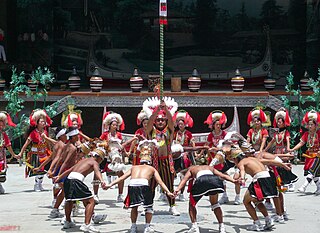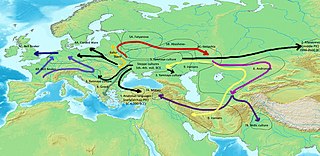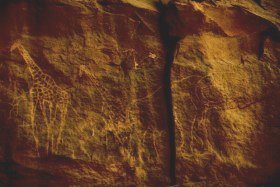 W
WThe Austronesian peoples, also sometimes referred to as the Austronesian-speaking peoples, are a large group of various peoples in Taiwan, Maritime Southeast Asia, Oceania and Madagascar that speak the Austronesian languages. The nations and territories predominantly populated by Austronesian-speaking peoples are sometimes known collectively as Austronesia.
 W
WThe Bantu expansion was a major series of migrations of the original Proto-Bantu-speaking group, which spread from an original nucleus around West-Central Africa across much of sub-Saharan Africa. In the process, the Proto-Bantu-speaking settlers displaced or absorbed pre-existing hunter-gatherer and pastoralist groups that they encountered.
 W
WIn paleontology and archaeology, the Danubian corridor or Rhine-Danube corridor refers to a route along the valleys of the Danube River and Rhine River of various migrations of Eastern cultures from Asia Minor, the Aegean region, the Pontic-Caspian steppe, etc., into the north and northwest of Europe.
 W
WSeveral expansions of populations of archaic humans out of Africa and throughout Eurasia took place in the course of the Lower Paleolithic, and into the beginning Middle Paleolithic, between about 2.1 million and 0.2 million years ago (Ma). These expansions are collectively known as Out of Africa I, in contrast to the expansion of Homo sapiens (anatomically modern humans) into Eurasia, which may have begun shortly after 0.2 million years ago.
 W
WEarly human migrations are the earliest migrations and expansions of archaic and modern humans across continents. They are believed to have begun approximately 2 million years ago with the early expansions of hominins out of Africa of Homo erectus. This initial migration was followed by other archaic humans including H. heidelbergensis, which lived around 500,000 years ago and was the likely ancestor of both Denisovans and Neanderthals. Early hominids were said to have "crossed land bridges that were eventually covered in water".
 W
WThe Indo-Aryan migrations were the migrations into the Indian subcontinent of Indo-Aryan peoples, an ethnolinguistic group that spoke Indo-Aryan languages, the predominant languages of today's North India, Pakistan, Nepal, Bangladesh, Sri Lanka and the Maldives. Indo-Aryan population movements into the region and Anatolia from Central Asia are considered to have started after 2000 BCE, as a slow diffusion after the Late Harappan period, which led to a language shift in the northern Indian subcontinent. The Iranian languages were brought into the Iranian plateau by the Iranians, who were closely related to the Indo-Aryans.
 W
WThe Indo-European migrations were the migrations of Proto-Indo-European language (PIE) speakers, as proposed by contemporary scholarship, and the subsequent migrations of people speaking further developed Indo-European languages, which explains why the Indo-European languages are spoken in a large area in Eurasia, from India and Iran to Europe.
 W
WTraditional Polynesian navigation was used for thousands of years to make long voyages across thousands of kilometres of the open Pacific Ocean. Navigators travelled to small inhabited islands using wayfinding techniques and knowledge passed by oral tradition from master to apprentice, often in the form of song. Generally, each island maintained a guild of navigators who had very high status; in times of famine or difficulty, they could trade for aid or evacuate people to neighbouring islands. As of 2014, these traditional navigation methods are still taught in the Polynesian outlier of Taumako in the Solomons.
 W
WIn paleoanthropology, the recent African origin of modern humans, also called the "Out of Africa" theory (OOA), recent single-origin hypothesis (RSOH), replacement hypothesis, or recent African origin model (RAO), is the dominant model of the geographic origin and early migration of anatomically modern humans. It follows the early expansions of hominins out of Africa, accomplished by Homo erectus and then Homo neanderthalensis.
 W
WThe Sahara pump theory is a hypothesis that explains how flora and fauna migrated between Eurasia and Africa via a land bridge in the Levant region. It posits that extended periods of abundant rainfall lasting many thousands of years in Africa are associated with a "wet-Sahara" phase, during which larger lakes and more rivers existed. This caused changes in the flora and fauna found in the area. Migration along the river corridor was halted when, during a desert phase 1.8–0.8 million years ago (mya), the Nile ceased to flow completely and possibly flowed only temporarily in other periods due to the geologic uplift of the Nile River region.
 W
WIn the context of the recent African origin of modern humans, the Southern Dispersal scenario refers to the early migration along the southern coast of Asia, from the Arabian peninsula via Persia and India to Southeast Asia and Oceania Alternative names include the "southern coastal route" or "rapid coastal settlement", with later descendants of those migrations eventually colonizing the rest of Eurasia, the remainder of Oceania, and the Americas.